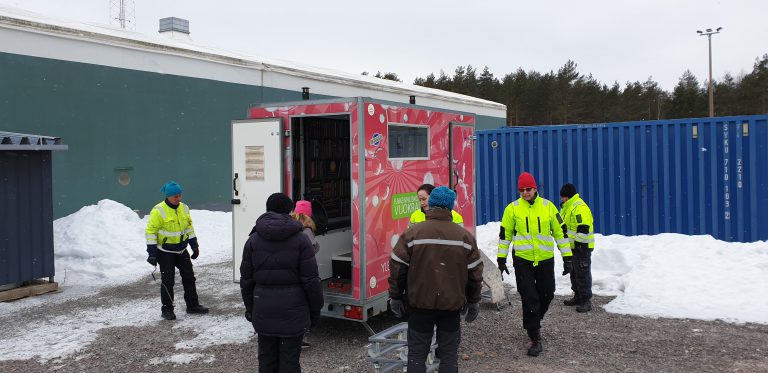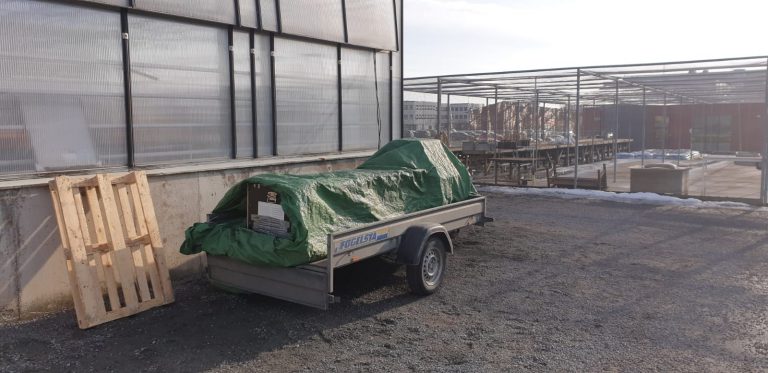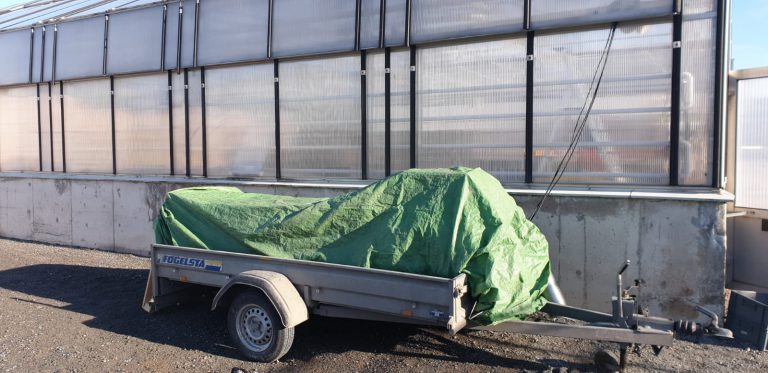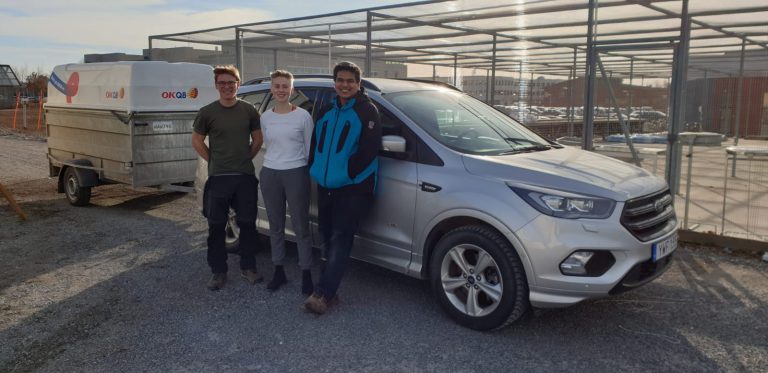
All loaded up and ready to leave! PC: Anooj Ramanathan
Den 25 mars gav sig tre av gruppens medlemmar, Prithvi Simha, Giulio Zorzetto, och Caroline Karlsson av till Finland med en släpvagn fullastad med komponenter som bildar ett urinsorteringssystem. De tog nattfärjan och nådde destinationen nästa dag, då de fortsatte resan till Tammerfors. På plats i Tammerfors ska de nu med hjälp av den finska parten av projektet installera komponenterna i en portabel toalett. Urinsorteringssystemet beräknas vara igång första veckan i mars.
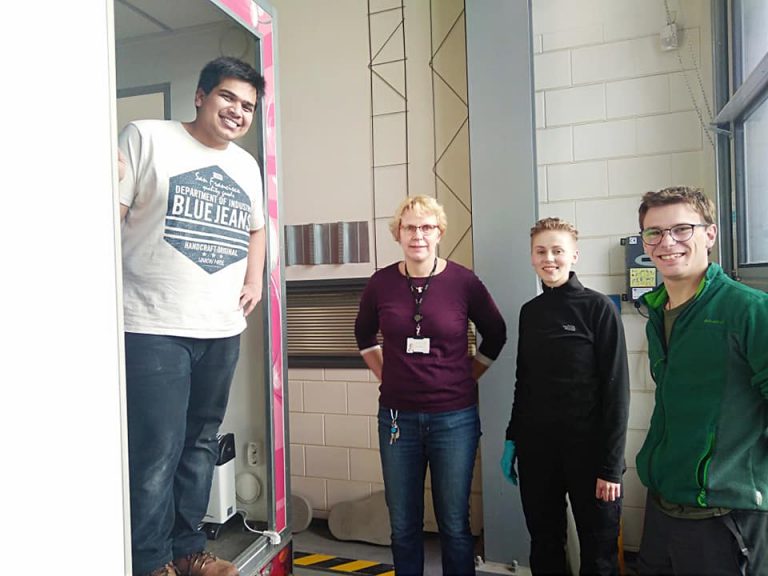
At the Tampere University of Applied Sciences with Eeva–Liisa Viskari . PC: Sari Huuhtanen

